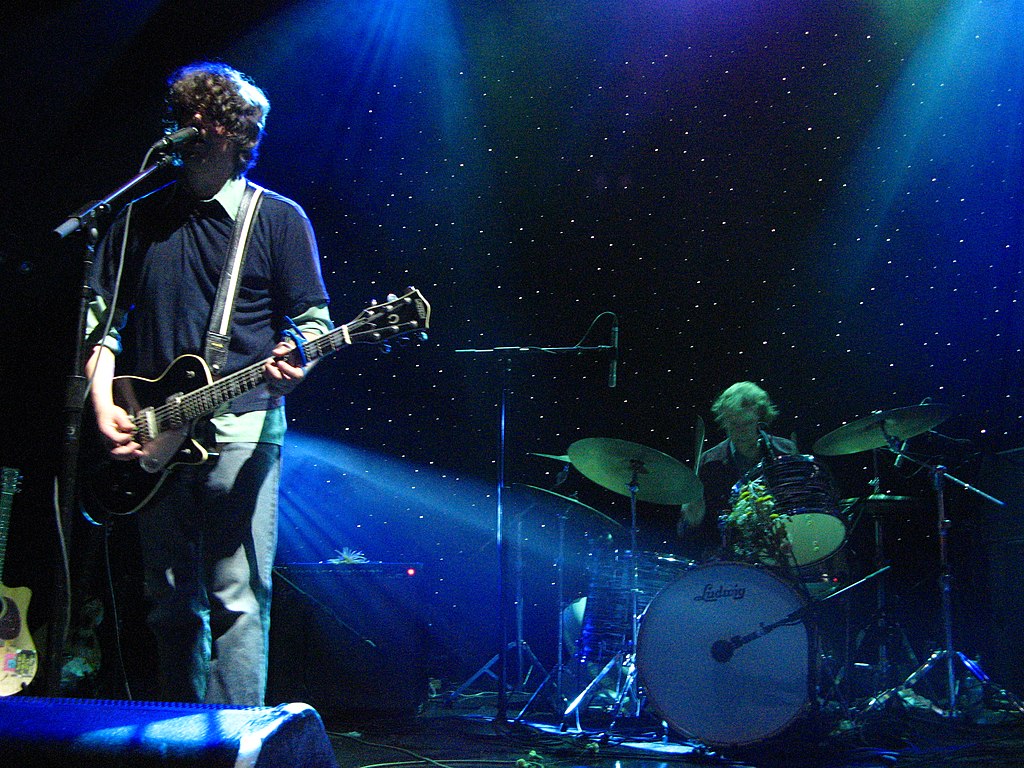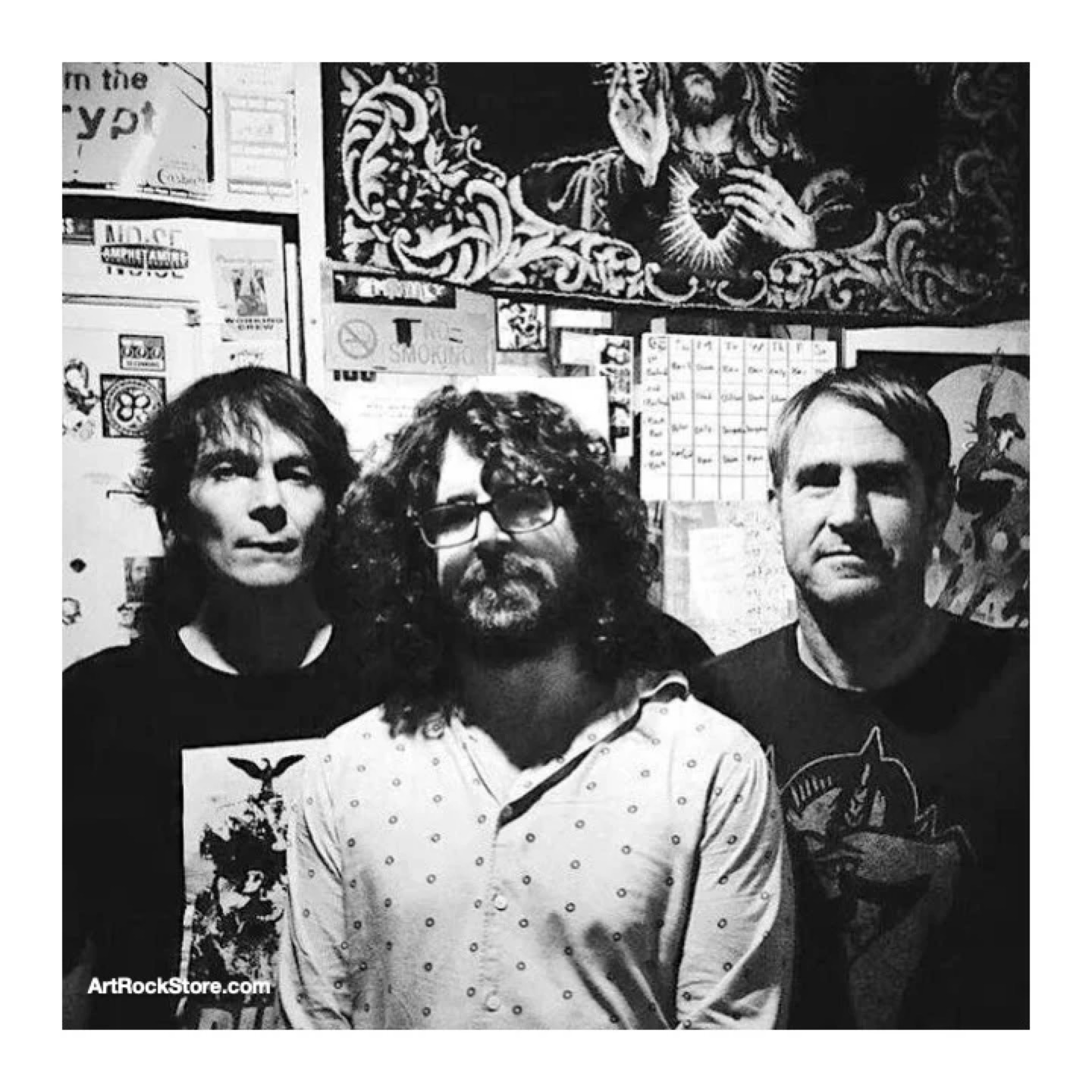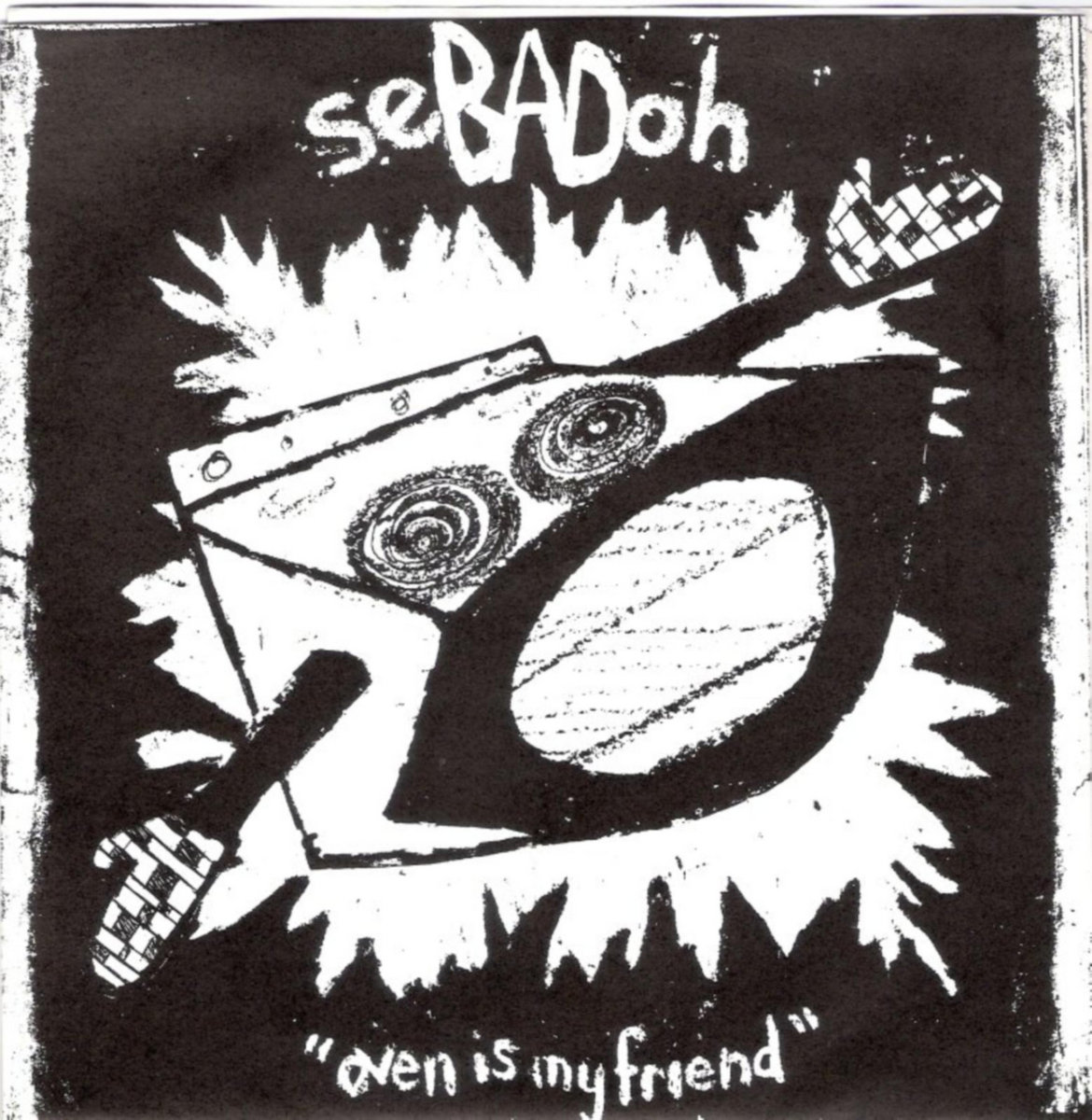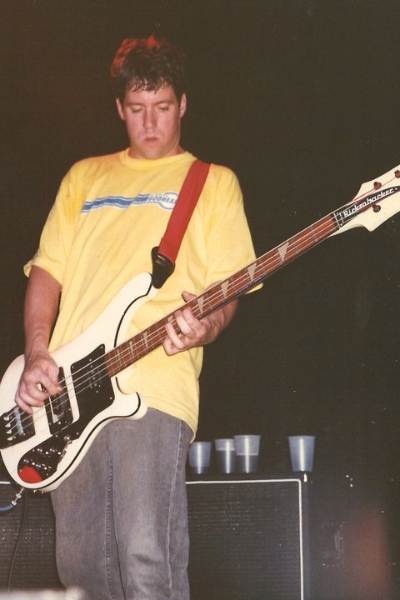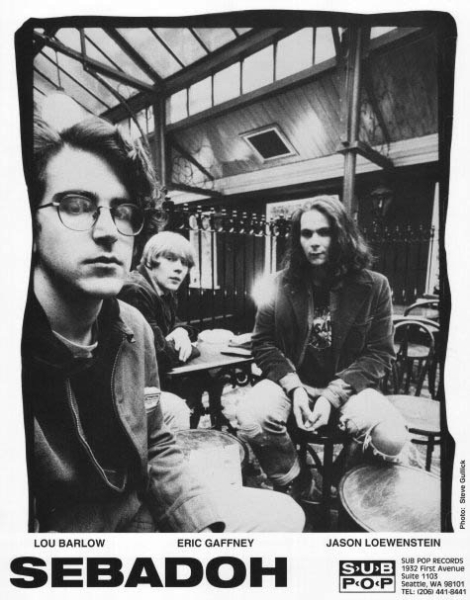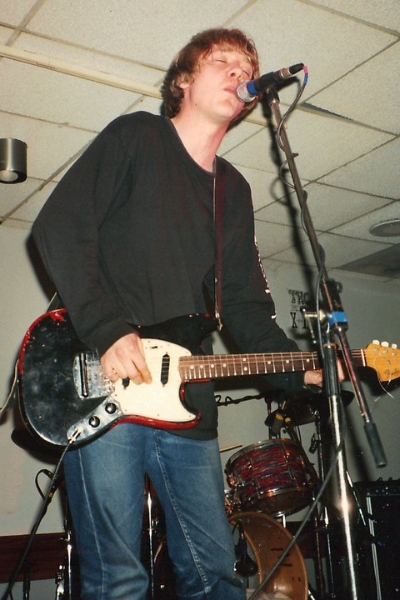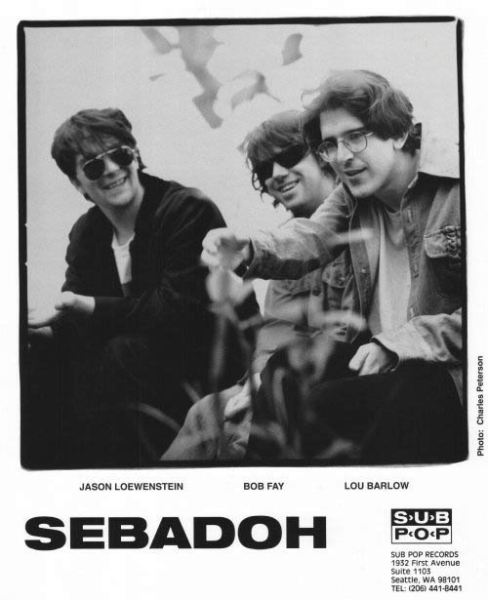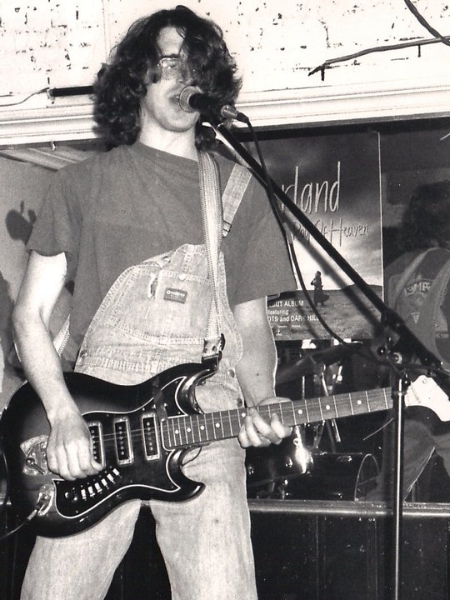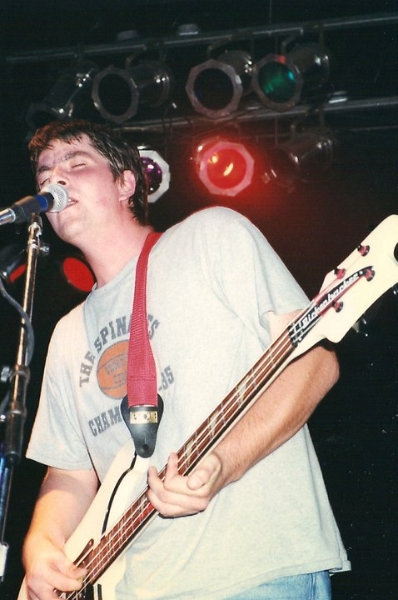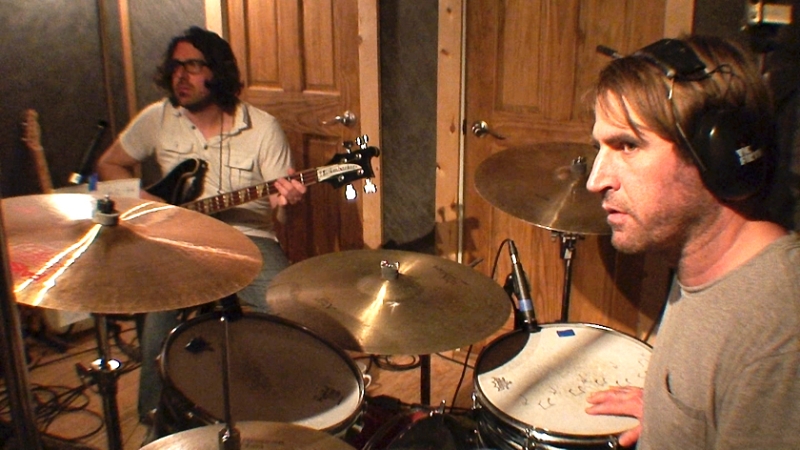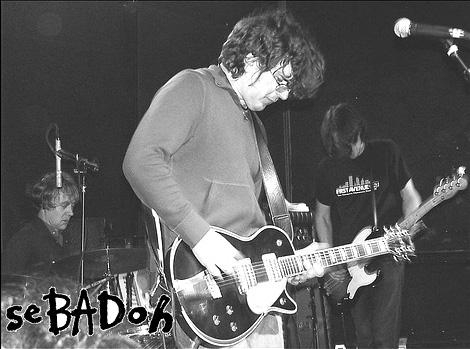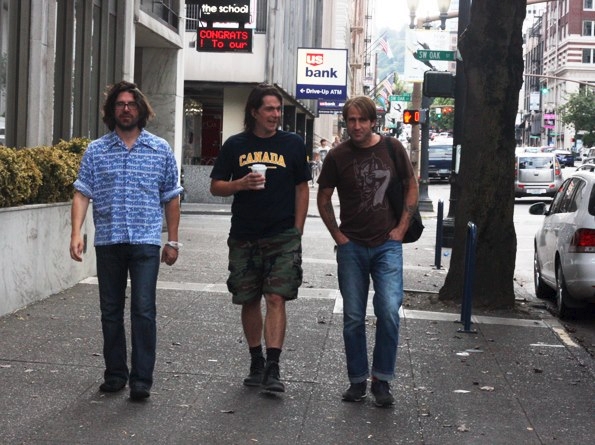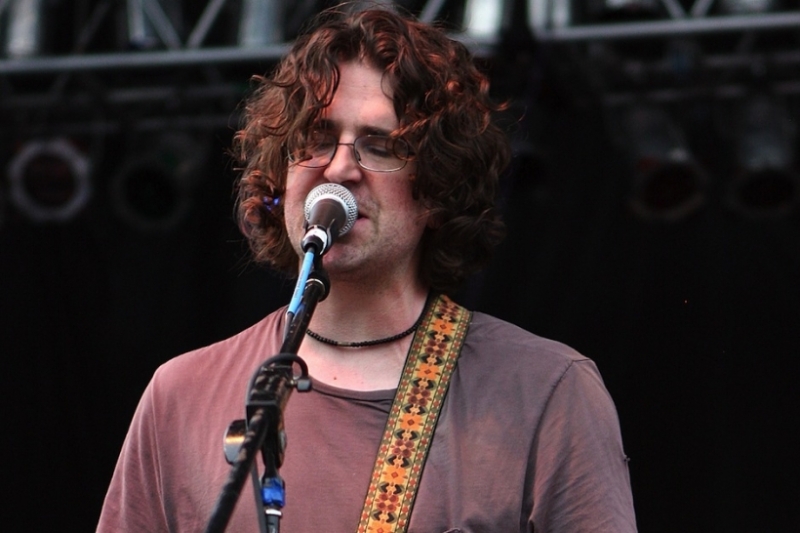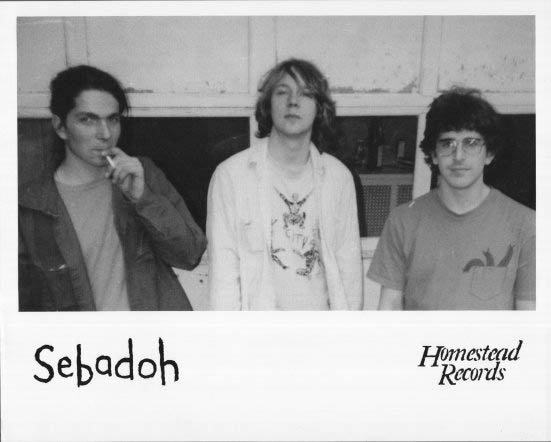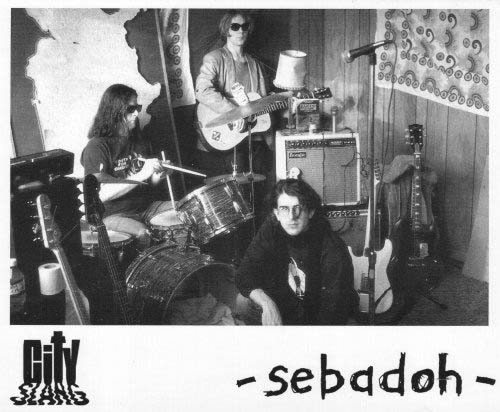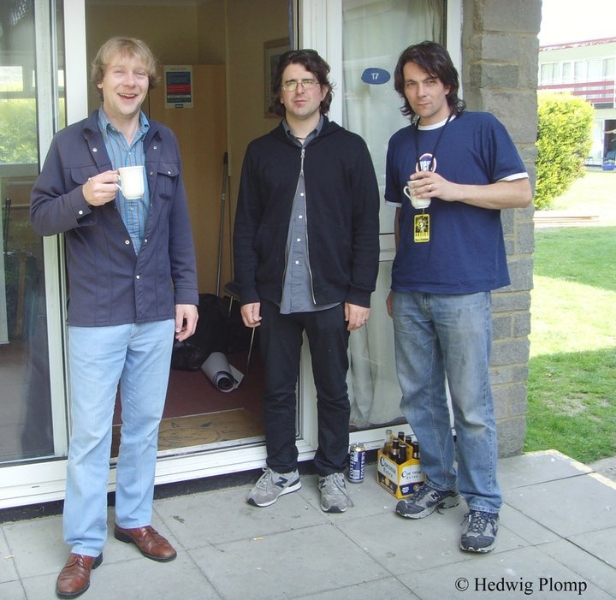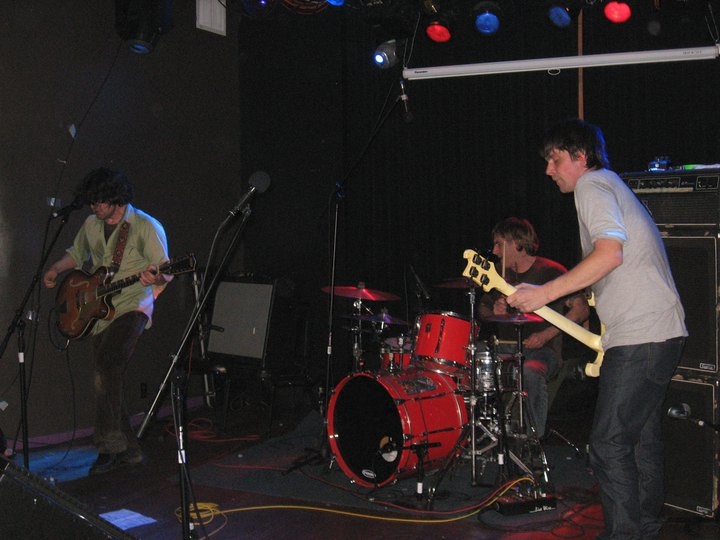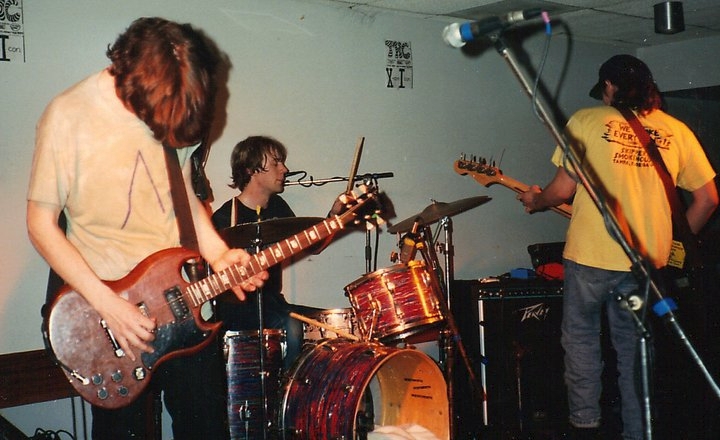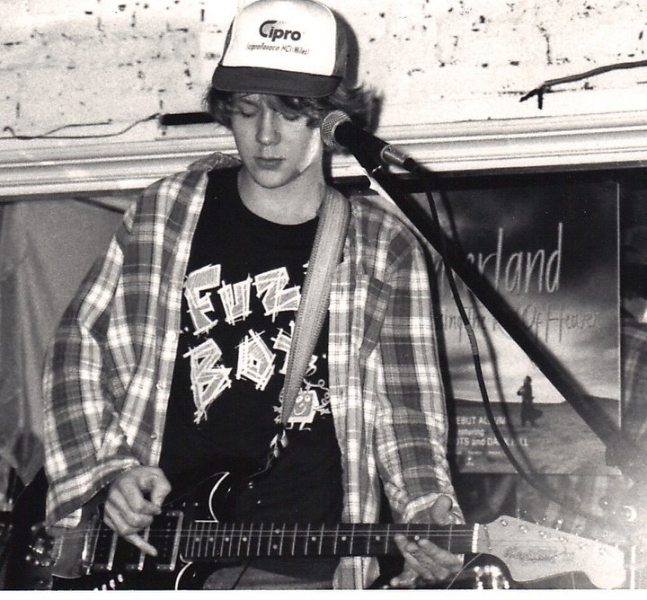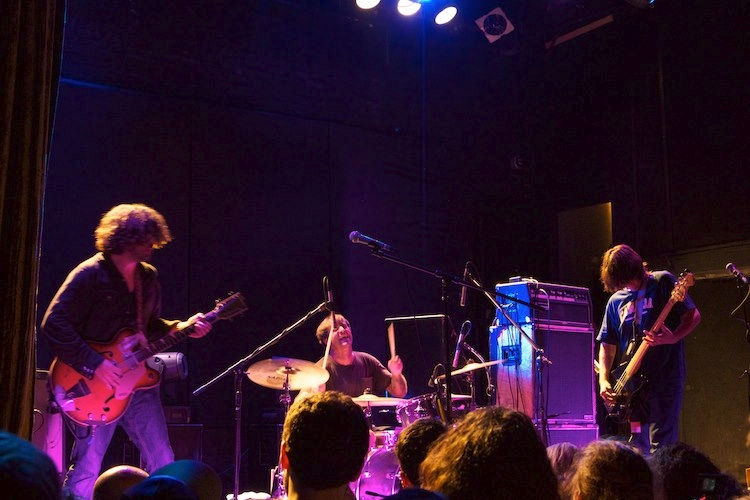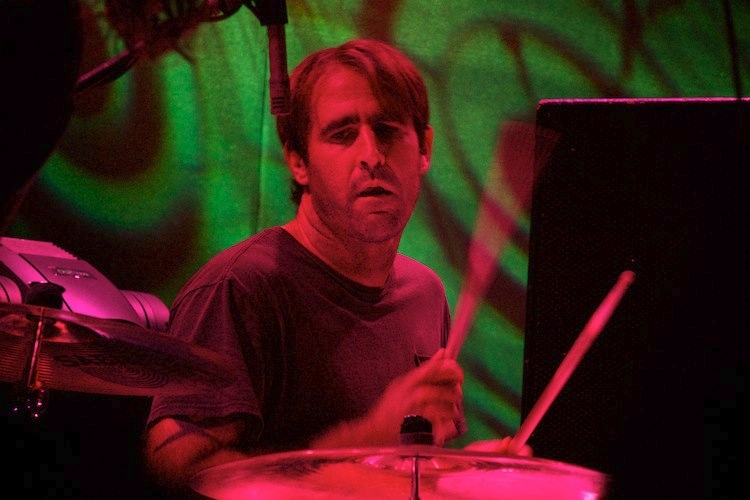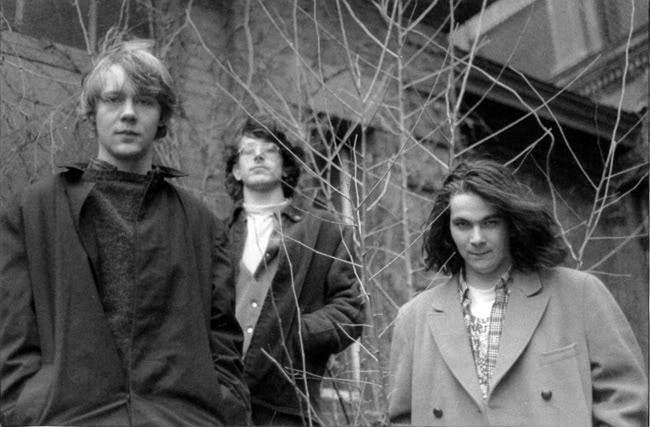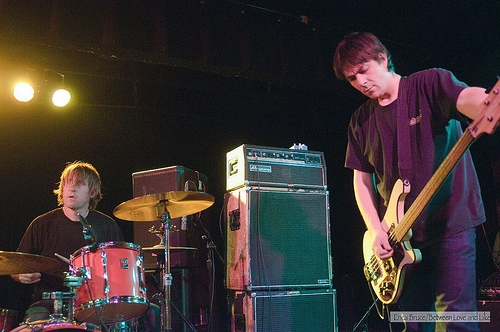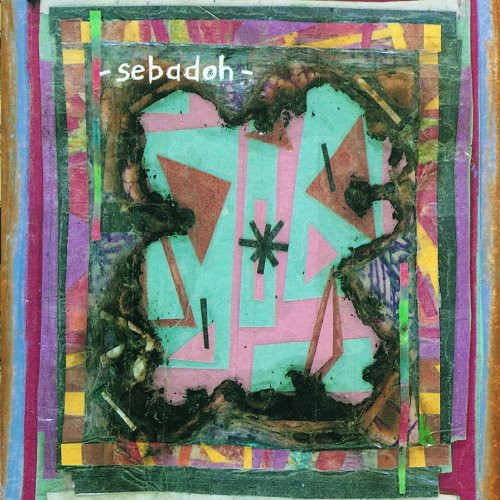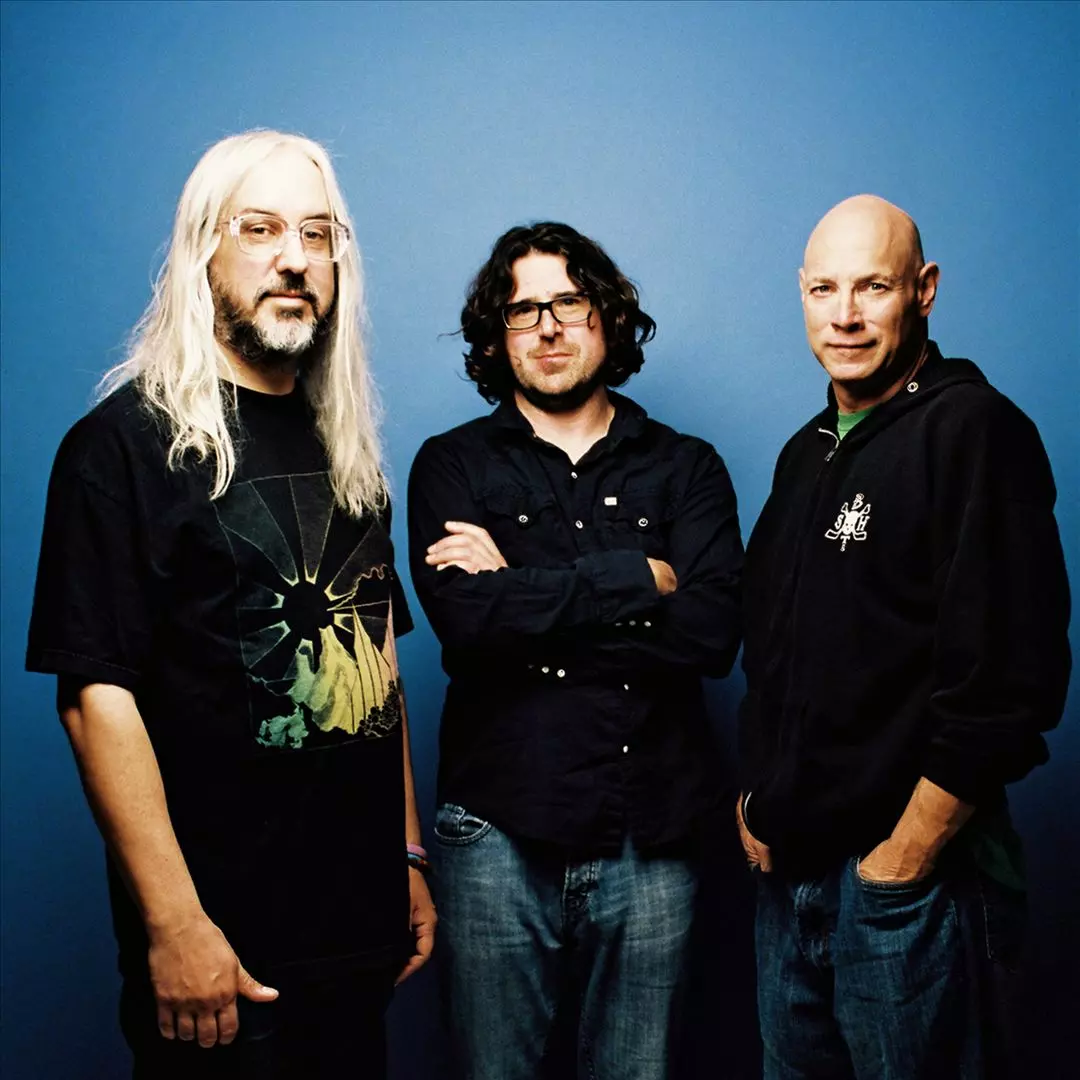Sebadoh
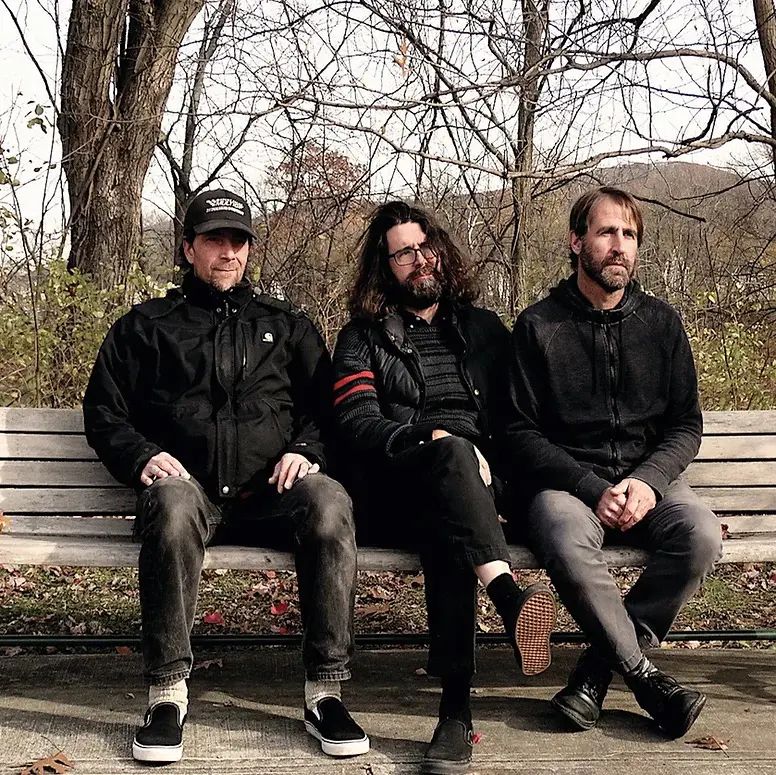
Sebadoh
“It’s a new generation of electric white boy blues!” Lou Barlow declares on Sebadoh’s 1991 single “Gimme Indie Rock.” “Come on indie rock – it’s gone big!”
No lyric encapsulated the alternative-goes-mainstream revolution of the ‘90s so perfectly and powerfully. But even when its music incorporated that era’s most in-demand features – quiet/loud dynamics, aggressive guitars, lyrics blending cynicism with sincerity – Sebadoh’s own transition from the periphery to full-on popularity never quite transpired. This was largely the result of major creative tensions between the chief songwriters – Westfield, Massachusetts native Barlow and Northampton’s Eric Gaffney and Jason Loewenstein – who occupied three vastly different worlds.
Origins, Formation
Sebadoh roots go back to Dinosaur Jr., the seminal alt-rock band Barlow co-founded with J Mascis in 1984. For the Dinosaur Jr. album You’re Living All Over Me, Barlow cut the song “Poledo” with a portable recorder and a pair of cheap microphones, a creative approach that presaged Sebadoh’s involvement in lo-fi (and helped spearhead lo-fi’s metamorphosis from humble aesthetic to actual genre). Early pressings of You’re Living All Over Me released in the Boston area included a Barlow cassette titled “Weed Forestin’,” which was recorded under the name Sebadoh, a nonsense word Barlow often sang on home recordings.
Following his departure from Dinosaur Jr in 1989, Barlow made Sebadoh a full-time endeavor. Gaffney was already on board, having contributed to the group’s earliest homemade recordings; Loewenstein later joined to play drums and bass.
Early recordings
Early releases, particularly the landmark Sebadoh III (issued in 1991), showed the divergent styles and inspirations of all three artists. Barlow spun rickety folk-rock songs of the heated and plaintive variety, many of which were dedicated to girlfriend/wife/muse, Kathleen Billus; Gaffney spat out noise punk that was damaged and indignant; and Loewenstein’s material occupied the cramped space in between them. The effect of hearing such divergent styles packaged on the same album was wonderfully disorienting and alienating.
The band’s next two discs, 1993’s Bubble and Scrape and 1994’s Bakesale – the latter being the first without Gaffney, who left the band and was replaced by Bob Fay – marked a significant shift in the group’s recording and production approaches, with Loewenstein assuming a more prominent songwriting role; as a whole, the band relied less on the bedroom four-track and transformed its trademark lo-fi sound into something much more robust and focused (despite Barlow’s contention that hi-fi is “brutally sterile”).
Hiatus, Reunion, Defend Yourself, Act Surprised
Two more albums followed – Harmacy (1996) and The Sebadoh (1999) – before the group took an extended hiatus. Barlow worked on his side-project, The Folk Implosion, before reuniting with the original members of Dinosaur Jr. for several tours. Loewenstein cut a solo album, 2002’s At Sixes and Sevens, and recorded and performed with The Fiery Furnaces and Will Oldham. Gaffney did solo work (such as 1999’s Brilliant Concert Numbers) and recorded with his own band, Fields of Gaffney.
In 2007, the original Sebadoh lineup of Barlow, Loewenstein and Gaffney reunited and toured. Their most recent albums are 2013’s Defend Yourself, featuring original material from Barlow and Loewenstein, and 2021’s Act Surprised.
(by Ryan Foley)

